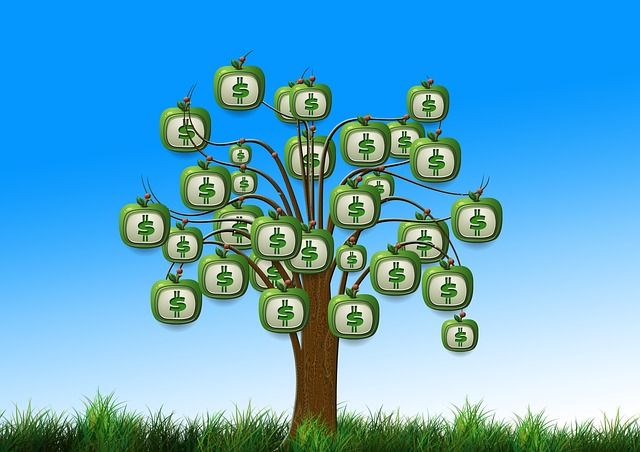Gov. Ralph Northam’s administration is exploring a possible alliance with the New York Green Bank to finance projects.
Virginia’s energy office is exploring whether to align the state with a billion-dollar New York clean energy financing program.
The New York Green Bank is one of 14 green banks nationally. The programs blend public, commercial and philanthropic money to fund projects as diverse as solar, energy efficiency, battery storage and green transportation.
Through 2018, the five-year-old bank had invested $638 million in projects with a total cost of $1.75 billion. Now, it’s planning to expand its reach beyond New York, offering financing in states that don’t have the wherewithal or legislative support to create their own green banks.
To accelerate Virginia’s energy transition, former Gov. Terry McAuliffe expressed interest in forming a homegrown green bank several years ago. In fact, the idea was among the leading five recommendations from a climate change commission in December 2015 appointed by the Democratic governor.
But the suggestion was never acted upon. And Virginia’s Republican-majority General Assembly has not shown interest in reviving it.
That lack of progress — at least for the time being — is what motivated officials in the energy division at the state Department of Mines, Minerals and Energy to explore the New York option.
“There are hundreds of projects we would like to do in Virginia,” said Al Christopher, the energy division manager at the department.
“DMME has long played a role in energy financing in Virginia and we’re always looking at new ways to do that,” he continued. “We’re eagerly awaiting developments in the green bank space.”
Critics in Virginia argue that only New York would reap the financial benefits of such a north-south connection. But backers maintain that Virginia’s gains in clean energy jobs and in-state renewable energy generation would far outweigh that worry.
Dan Farrell, the division’s energy financing program manager, said he has tracked how clean energy is attracting more investors with deep pockets, especially in the Northeast, where the majority of green banks are based.
“A lot is happening and happening very quickly,” Farrell said. “We have a couple of different irons in the fire, but we don’t have anything that is fully baked.”
Green banks began at the concept level a decade ago. Most have access to significant public funds from ratepayers or taxpayers at the outset, Farrell said.
For instance, New York’s bank, operated by its State Energy Research and Development Authority, didn’t need legislative approval because, at the behest of Democratic Gov. Andrew Cuomo, utility ratepayers are funding it. However, the $1 billion fund for other states would be seeded with private capital.
Related: NY Green Bank’s Clean Tech Investments Reach $346 Million
Neither Christopher nor Farrell anticipate that Virginia will follow New York’s funding model.
“It’s unlikely we will see hundreds of millions of dollars raining down from the General Assembly,” Farrell said. “The question is, how can we access public capital and then leverage private capital here in Virginia?”
Advocates: Virginia should lead, not follow
Virginia’s interest in New York is on the radar of Jeff Schub, executive director of the New York-based Coalition for Green Capital. One of his organization’s projects is the American Green Bank Consortium.
He emphasized that New York would not play a role in selecting which projects to finance because Virginia already has plenty of expertise on local market conditions, policies and development partners.
“We’re sitting in Manhattan, we don’t know the market in Virginia,” he said. “There would be somebody on the ground close to that market and invested in the policy apparatus of the state. That’s a really useful voice.”
Making New York capital available elsewhere means states such as Virginia don’t have to reinvent the wheel, Schub said. This is not a lopsided deal that favors only New York, he added.
“A state gets clean energy, jobs you can’t outsource and lower energy costs,” he said. “The whole rationale is to build capacity to finance clean energy in New York and let other states piggyback.”
Karla Loeb is not keen on having Virginia rely on outside resources to advance clean energy. She’s the chief policy and development officer with Sigora Solar. The Charlottesville company, founded in 2011, is the top Virginia-based rooftop solar installer in the state.
“Taking a handout isn’t the solution,” she said. “It’s naive to think Virginians would be excited about taking a handout from New York.
“The solutions are here and the opportunities are here. This should benefit Virginians, not shareholders in New York.”
Virginia’s robust economy and other tools make it a prime candidate to craft a green bank, she said, adding that it makes sense for the Department of Mines, Minerals and Energy to oversee it.
However, she emphasized that department staff would need to collaborate with other agencies — particularly housing and small business authorities — to make green energy a government-wide imperative.
“This is about empowering existing resources in Virginia to organize the state’s expertise and deploy clean energy,” she said. “We have to make sure we are a leader and not a follower. We are a follower now.”
How Virginia can step up
Virginia is one of a handful of states with an election this November. All 140 General Assembly seats are on the ballot and Republicans have thin margins in both legislative chambers.
“Nobody knows what is going to happen in this election,” Loeb said. “It could be a ballgame-changer.”
A flip in the legislature would make in-state funding for a green bank more likely, she said, and give Democratic Gov. Ralph Northam more leeway on other eco-initiatives.
For instance, that scenario could spur Virginia to adopt a renewable energy standard with teeth. As well, the state could follow through on Northam’s initiative to join the Regional Greenhouse Gas Initiative (RGGI).
Earlier this year, the General Assembly stymied Northam’s plans to tie in with the compact of northeastern states designed to cap and reduce emissions of heat-trapping gases from power plants.
RGGI is a potential funding stream for a green bank and an aggressive and mandatory renewable energy standard would push innovation, Loeb said.
Virginia’s voluntary standard, not updated since 2007, suggests that the major utilities — Dominion Energy and Appalachian Power — provide 15% of their energy from renewables by 2025.
In April, Virginia’s State Air Control Board adopted a relatively tame rule directing Virginia to reduce emissions of heat-trapping gases from power plants 30% between 2020 and 2030.
New York is far more ambitious on the climate front. It belongs to RGGI. And, Democratic Gov. Andrew Cuomo has been in the spotlight this summer for bold legislation committing the state to 100% carbon-free electricity by 2040 and economy-wide, net-zero greenhouse gas emissions by 2050.
Forming a national green bank?
Federal legislation being promoted by Schub’s coalition would allow any state the option of participating in green banking.
The brand new measure calls for capitalizing a National Climate Bank with $35 billion over five years to address coast-to-coast clean energy needs. It would start with an appropriation of $10 billion and grow by $5 billion each successive year.
One, it would offer technical assistance to states interested in starting up their own bank. And two, it would provide capital to directly finance projects such as offshore wind and transmission lines for clean energy infrastructure.
The legislation is sponsored by four Democrats, including U.S. Sen. Ed Markey of Massachusetts. In mid-July, Markey was the keynote speaker at the first-ever summit of green bank leaders organized by his Schub’s coalition in Washington, D.C.
“We’ve had serious conversations about a green bank” on the national level, Schub said. “The challenge is finding a political pathway to create a new institution.”
The coalition doesn’t expect Congress to act on its legislation until after the November 2020 election.
“Realistically,” Schub said, “it’s a strategy for 2021.”
In the meantime, DMME’s Christopher and Farrell will continue with their green bank homework.
“We have found that there’s no silver-bullet solution to financing energy projects,” Christopher said.
Ideally, he said, a green bank doing work in Virginia would serve as an umbrella for at least a dozen distinct financing programs. Having money makes a difference, but so does having an appropriate marketing plan to fill the project pipeline.
Green banks are difficult to understand, Farrell said. Barriers might fall if Schub’s coalition helps Virginia lawmakers grasp the possibilities.
“Educating our state legislators on the benefits of [a green bank] is crucial,” Farrell said. “That’s just some of the work that needs to be done.”
This article was first published on the Energy News Network and was reprinted with permission.
Renewable energy project development is a major topic of discussion at POWERGEN International, set to hit New Orleans November 19-21. 2019. See the renewable energy educational offerings here and then register to attend.





